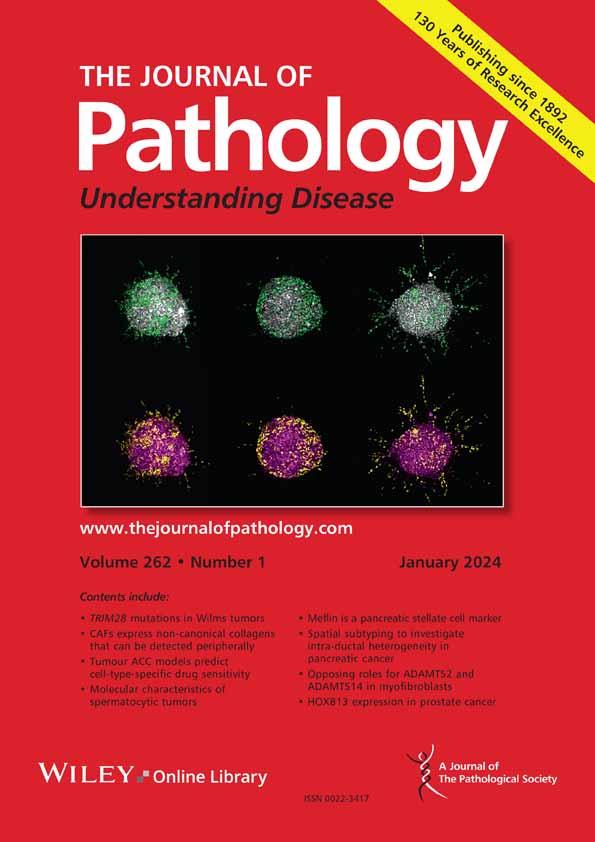求助PDF
{"title":"Utilizing aptamers in targeted protein degradation strategies for disease therapy","authors":"Lin Li, Songbo Xie, Jun Zhou, Jie Ran","doi":"10.1002/path.6422","DOIUrl":null,"url":null,"abstract":"<p>Targeted protein degradation (TPD) has emerged as a promising therapeutic strategy, offering the potential to reduce disease-causing proteins that have traditionally been challenging to target using conventional small molecules. Despite significant advances made with TPD technologies, challenges such as high molecular weight, difficulties in identifying suitable ligands, suboptimal absorption, and metabolic instability remain unresolved. Recently, aptamers – single-stranded DNA or RNA oligonucleotides known for their high specificity and affinity for protein targets – have introduced novel opportunities to expand the scope of TPD, a strategy now referred to as aptamer-based TPD. This approach has demonstrated considerable promise in treating various diseases, such as cancer and ocular disorders. For example, an aptamer-proteolysis-targeting chimera (PROTAC) conjugate (APC) improved tumor targeting and reduced toxicity in a breast cancer model, and a vascular endothelial growth factor-degrading (VED)-lysosome-targeting chimera (LYTAC) molecule effectively inhibited abnormal vascular growth in vascular retinal diseases. These examples highlight the practical relevance and potential in advancing drug discovery efforts. In this review we provide a comprehensive overview of the latest advances in aptamer-based TPD strategies, including proteolysis-targeting and lysosome-targeting chimeras, emphasizing their applications, potential therapeutic benefits, as well as the challenges that must be overcome to fully harness their clinical potential. © 2025 The Pathological Society of Great Britain and Ireland.</p>","PeriodicalId":232,"journal":{"name":"The Journal of Pathology","volume":"266 2","pages":"134-143"},"PeriodicalIF":5.2000,"publicationDate":"2025-04-10","publicationTypes":"Journal Article","fieldsOfStudy":null,"isOpenAccess":false,"openAccessPdf":"","citationCount":"0","resultStr":null,"platform":"Semanticscholar","paperid":null,"PeriodicalName":"The Journal of Pathology","FirstCategoryId":"3","ListUrlMain":"https://pathsocjournals.onlinelibrary.wiley.com/doi/10.1002/path.6422","RegionNum":2,"RegionCategory":"医学","ArticlePicture":[],"TitleCN":null,"AbstractTextCN":null,"PMCID":null,"EPubDate":"","PubModel":"","JCR":"Q1","JCRName":"ONCOLOGY","Score":null,"Total":0}
引用次数: 0
引用
批量引用
Abstract
Targeted protein degradation (TPD) has emerged as a promising therapeutic strategy, offering the potential to reduce disease-causing proteins that have traditionally been challenging to target using conventional small molecules. Despite significant advances made with TPD technologies, challenges such as high molecular weight, difficulties in identifying suitable ligands, suboptimal absorption, and metabolic instability remain unresolved. Recently, aptamers – single-stranded DNA or RNA oligonucleotides known for their high specificity and affinity for protein targets – have introduced novel opportunities to expand the scope of TPD, a strategy now referred to as aptamer-based TPD. This approach has demonstrated considerable promise in treating various diseases, such as cancer and ocular disorders. For example, an aptamer-proteolysis-targeting chimera (PROTAC) conjugate (APC) improved tumor targeting and reduced toxicity in a breast cancer model, and a vascular endothelial growth factor-degrading (VED)-lysosome-targeting chimera (LYTAC) molecule effectively inhibited abnormal vascular growth in vascular retinal diseases. These examples highlight the practical relevance and potential in advancing drug discovery efforts. In this review we provide a comprehensive overview of the latest advances in aptamer-based TPD strategies, including proteolysis-targeting and lysosome-targeting chimeras, emphasizing their applications, potential therapeutic benefits, as well as the challenges that must be overcome to fully harness their clinical potential. © 2025 The Pathological Society of Great Britain and Ireland.
利用适体在疾病治疗的靶向蛋白质降解策略
靶向蛋白降解(TPD)已经成为一种很有前途的治疗策略,提供了减少传统上使用传统小分子靶向具有挑战性的致病蛋白的潜力。尽管TPD技术取得了重大进展,但诸如高分子量、识别合适配体的困难、次优吸收和代谢不稳定性等挑战仍未解决。最近,适体-单链DNA或RNA寡核苷酸以其对蛋白质靶点的高特异性和亲和力而闻名-为扩大TPD的范围提供了新的机会,这种策略现在被称为基于适体的TPD。这种方法在治疗各种疾病,如癌症和眼部疾病方面显示出相当大的前景。例如,适体蛋白水解靶向嵌合体(PROTAC)偶联物(APC)在乳腺癌模型中提高了肿瘤靶向性并降低了毒性,血管内皮生长因子降解(VED)溶酶体靶向嵌合体(LYTAC)分子有效抑制血管性视网膜疾病中的异常血管生长。这些例子突出了推进药物发现工作的实际相关性和潜力。在这篇综述中,我们全面概述了基于适配体的TPD策略的最新进展,包括蛋白水解靶向和溶酶体靶向嵌合体,强调了它们的应用,潜在的治疗益处,以及必须克服的挑战,以充分利用其临床潜力。©2025英国和爱尔兰病理学会。
本文章由计算机程序翻译,如有差异,请以英文原文为准。






 求助内容:
求助内容: 应助结果提醒方式:
应助结果提醒方式:


